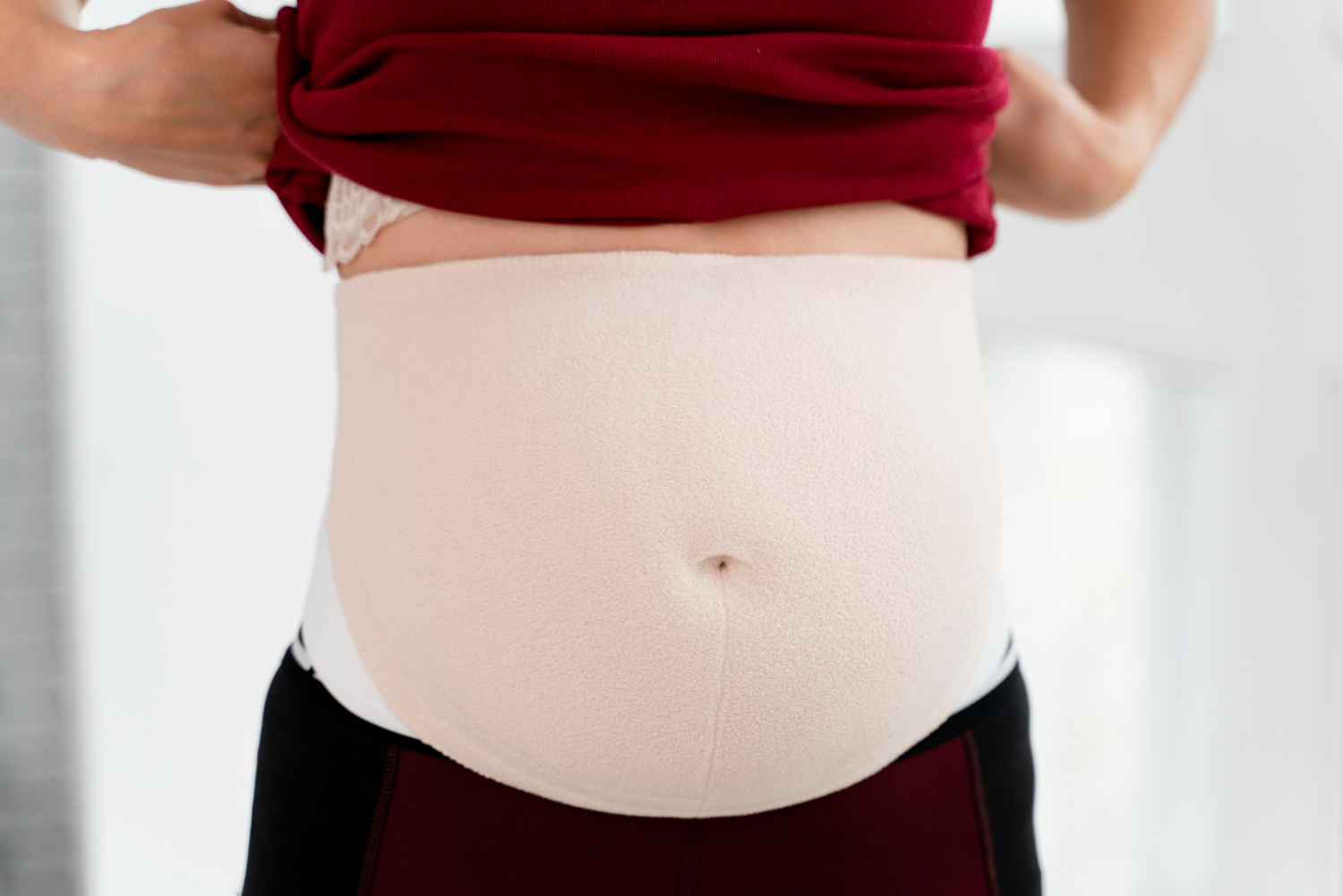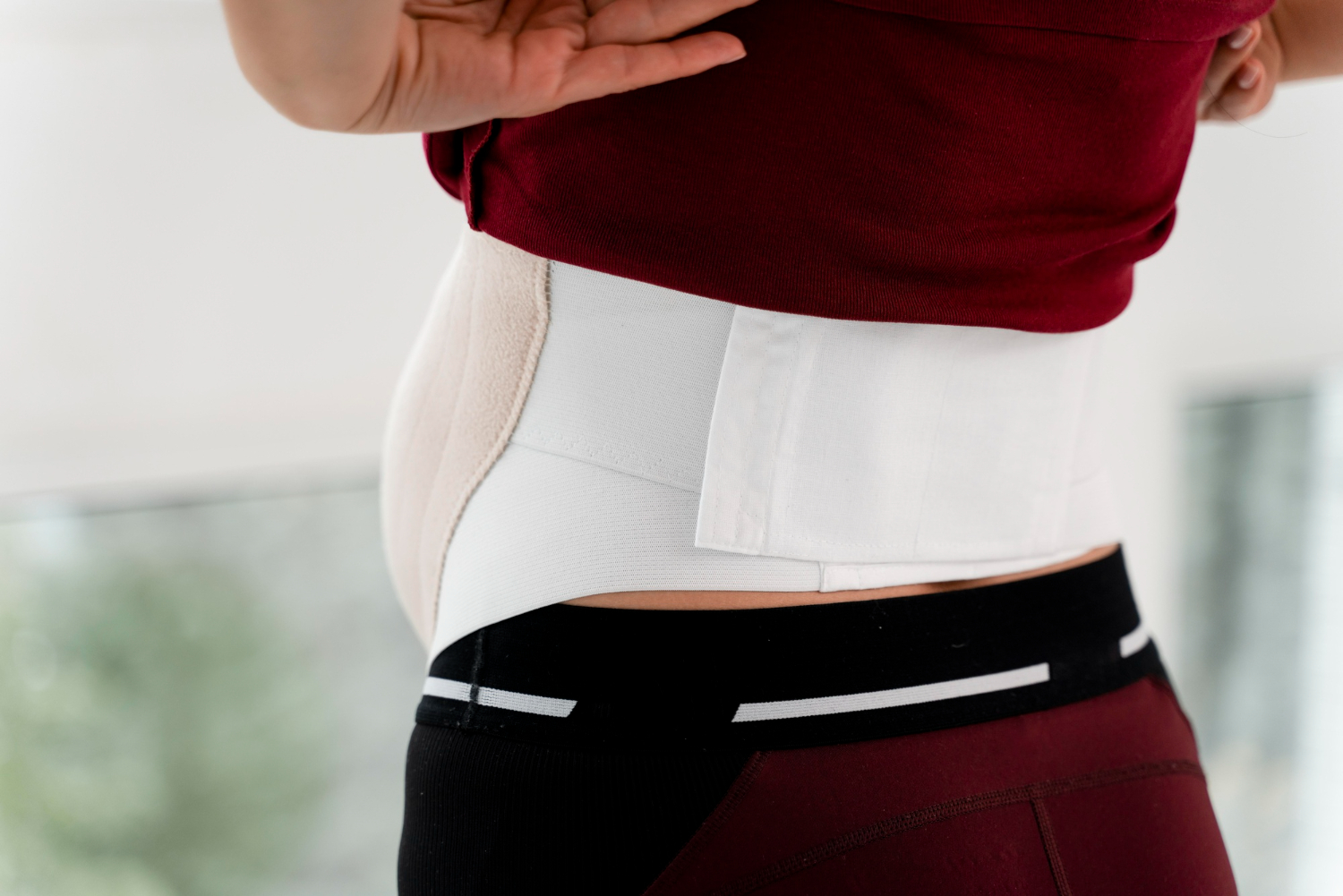
Postpartum Abdominal Prolapse: Natural Changes or a New Challenge?
There would be numerous changes in the body of a mother after the birth of a baby and hence, it is natural that some of these changes do raise certain concerns or in some cases, even lead to decreasing self-confidence levels. Distention of abdomen is one of the most widespread of these changes and can leave mothers with the issue of muscle laxity, skin overload, and disproportionate feelings. This may also have a great impact not only aesthetically but also physically. However, is this a mere shift that will wear out soon or can the proper approaches enhance it?
Why does the abdomen sag after giving birth?
The condition arises due to several physical and anatomical alterations that the pregnant mothers experience during and after childbearing. The key causes of this problem shall be discussed further:
1- Weight before and after pregnancy
The volume and the mode of weight gain during pregnancy is probably the most significant thing that could lead to a sagging abdomen after delivery. Putting on excess weight during pregnancy leads to increased pressure on the abdominal muscles and overstretches the skin such that it is not able to take back the initial shape. Moreover, the significant postpartum weight loss may also lead to the sagging skin because the skin is not going to have the time to achieve the elasticity status.
2- Stretching of muscles and skin during pregnancy
As the fetus keeps growing during pregnancy, the abdomen of the mother extends drastically. The abdominal muscles (particularly the rectus abdominis muscles) and the skin puffs round, stretches, and becomes thin since increasing volume and pressure are created by the presence of the uterus. This lengthening may cause the decrease in the elasticity of the skin and weaken the muscles. It is after giving birth that this stretching does not rotate back to its previous form leaving one with a sagging abdomen.
3- Hormonal changes and muscle relaxation
Pregnancy leads to relaxation of muscles and connective tissues in the body due to the hormonal changes that occur during pregnancy, notably elevated concentration of the hormone, progesterone. This especially works well on the abdominal muscles and lower abdomen. Following pregnancy, hormonal balances normalize with time, but because of the alterations in muscles and tissues, the sagging of the abdomen may occur.
4- Weight gain and rapid weight loss
Changes in weight is another cause of sagging abdomen that is important. Weight gain, especially the rapid and massive weight gain during a pregnancy period, may cause a lot of strain to abdominal muscles. In case of weight loss after giving birth, then the skin will never have to lose its elastic weight and develop into a sagging skin.
5- Number of pregnancies and multiple births
Other mothers who have undergone pregnancies or child births in the past many times tend to be at greater risk of having the abdomen sag than the rest. The skin and abdominal muscles will stretch further with every new pregnancy and these will become more difficult to fix after every delivery. This is particularly seen in women who have given birth on many occasions either vaginally or by cesareans since the abdominal muscles can be weakened than ever before.
6- Type of delivery: natural or cesarean section
Depending on the type of delivery, this may significantly affect the status of the abdomen following delivery. During vaginal delivery, greater force is applied to the abdominal muscles and it may in the process relax the body of the abdominal muscles, yet most often the abdominal muscles can resume their natural posture. Conversely, during a cesarean section, cuts are made on the stomach region and this might undermine the abdominal muscles and make them to sag.
7- Maternal age and pre-pregnancy physical condition
Age of the mother may as well be crucial in sagging abdomen. Aged women tend to have weak body muscles and tend to have more sagging abdomen in comparison to young women. Moreover, the mother condition before the pregnancy (in terms of the abundance of the abdominal muscles and abundance of the physical activity) may be the factor influencing the damage to the abdominal muscles to the extent value.
How to treat a sagging abdomen?
The after-childbirth treatment of abdominal prolapse is possible, and there are a number of proactive measures to restore your stomach muscles to the positive position. In this segment, we are going to find out the various ways in which one can treat this issue.
1- Proper sports and exercises
The one treatment that is fundamental in abdominal prolapse is special exercises to train the abdominal/pelvic floor muscles. Exercises that are safe and effective ways of strengthening your abdominal muscles (particularly during the postpartum period) are:
- Diaphragmatic Breathing Exercises
The exercises prevent weak abdominal muscles and promote the state of the abdomen.
- Kegel Movements
Such exercises do not only serve to strengthen the muscles of the pelvic floor, but they can also be used to reestablish the abdominal muscles.
- Bridge Exercises
Examples of bridge exercises are used to build on the abdominal and back muscles and to avoid sagging stomach.
Though these exercises cannot be viewed as the solution to all the problems of an abdomen, they can be considered as one of the most effective methods to restore the condition of the abdominal muscles and avoid sagging.
2- Proper nutrition and weight control
Eating healthy is also significant in building up of skin as well as muscles during postpartum. Proteins, vitamins (vitamins C and E in particular) and minerals, including zinc, can be consumed to restore tissues and reinforce the skin. In addition, weight management and weight loss progressively is one option, considering a balanced diet and mild exercise may help avoid additional drooping skin.
3- Massage & Physiotherapy
Physical therapy and abdominal massage are highly applicable in the case of abdominal muscles restoration. Physical therapy is a common service many mothers avail in order to strengthen their abdominal muscles to promote their recovery of strength. Massaging facilitates the flow of blood in the abdomen and preventing loose skin.
4- Surgery and Medical Options
In severe incidences there are surgical alternatives that have to be offered in case the sagging abdomen does not recover naturally. Abdominoplasty (abdominal cosmetic surgery) is one of the most frequent methods used in the practice; it implies the removal of excess skin and supports the abdominal muscles. Such surgery is generally applicable to mothers who have developed massive belly droop upon a number of childbirths.

Prevention of sagging abdomen: can it be prevented?
Though stomach protrusion cannot be always avoided, a person can minimize the risks by observing several tips. This section will discuss some of the steps that will assist in prevention of this problem.
1- Self-care during pregnancy
There are principles that one can follow when they are pregnant so that there is the minimum damage caused to the muscles and the skin on the abdomen. This is to be done by:
- Weight Control
Gaining weight in pregnancy must be controlled by the physician and in a progressive manner to exert less pressure on the abdomen.
- Pregnancy-Appropriate Exercises
Certain exercises can be done to aid abdominal and pelvic floor strengthening muscles.
- Observing a healthy diet
Taking in foods that are rich in vitamins and minerals will enhance better skin and tissue fortification.
2- Regular exercise after childbirth
One of the best methods to deal with sagging abdomen is by exercising after childbirth. You can also become stronger in longer term by starting with small stretching out exercises like walking, swimming and yoga to help your stomach muscle gain back its strength quicker. Naturally, one should bear in mind that heavy kinds of sport and intensive training must be introduced with the reference to the doctor and his approval.
3- Wearing compression clothing
Wearing compression clothes-special abdominal bras-after child birth can in some cases keep the muscles of the abdomen and the whole body firmer and reduce the chances of sagging. These garments assist in ways to stabilize the abdominal muscles, as well as get them back into their place quicker.
Final Thoughts
The sagging stomach is a normal post pregnancy process that a lot of mothers have to deal with but the thing is that your body is spectacular and it should never be forgotten. Not only is your body ready to birth a new life, as a mother you can also heal and come back out your best self with certainty and time. Physical postpartum changes It is all a part of your life and there is nothing as good as will power and self-care can assist you through the path. What matters is that you should have time and pride yourself on your beauty and power with each of your steps.
Resources
Postpartum Belly: How to Get Rid of It
Loose skin after pregnancy: Pictures, treatments, and timeline
Nonsurgical Postpartum Abdominal Rejuvenation: A Review and Our Experience








No comment yet, add your voice below!